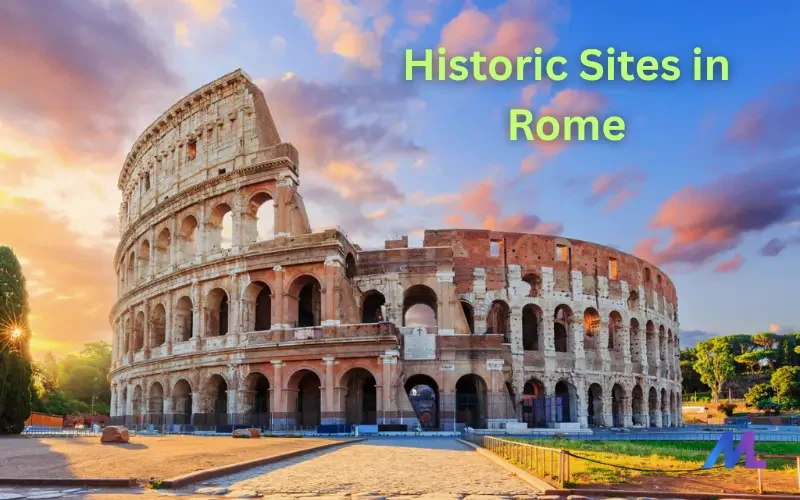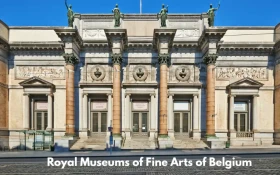Ultimate Guide to Historic Sites in Rome
Historic Sites in Rome
Rome is a historical city in the world. It is full of old architecture, old streets, and art. The city is like a living museum. A lot of tourists come to see the great ruins and landmarks annually. Visiting ancient places in Rome provides you with an opportunity to learn about culture, power, and beauty in the past. These locations showcase the history of emperors, gladiators and even large civilizations. You are walking through thousands of years of history when you walk in Rome.
Why Rome Is Known for Its History
Rome is characterized by rich history given that it was inhabited by great leaders and innovative artists. Numerous big names constructed temples, arenas, roads and palaces. Certain of these buildings are still in great condition. The city has maintained them in a good condition, and a range of individuals from different parts of the world can learn about them. This renders Rome as a significant culture and historical attraction.
Top Historic Sites in Rome to Visit
Rome has a lot of historic sites that cannot be overlooked. Some are grand and famous. The other ones are silent and not as popular as others but people also visit them.
Colosseum
The Colosseum is a landmark that is known throughout the world. It used to have massive gladiator battles. It is a massive structure that is impressive. You can experience a great sense of history when you are walking inside.
Roman Forum
This was the heart of the ancient civil life. Here markets, political discussions and religious rituals occurred. Nowadays, a person can go through the ancient streets and explore the way things used to be centuries ago.
Pantheon
The Pantheon has been known to be ideal in architecture. It contains a massive dome with a round hole on the top. It was constructed as a temple and continues to inspire architects till now.
Castel Sant’Angelo
This fortress was built by Emperor Hadrian. It later served as a castle and refuge for popes. It has a wonderful city view.
Trevi Fountain
It is not very old, but historic and symbolic. The visitors come to drop coins in the water. People feel that this is an omen and it is a guarantee of coming back to Rome.
Major Historic Sites in Rome and Details
|
Historic Site |
Year Built |
Purpose |
What You Will See Today |
|
Colosseum |
70-80 AD |
Arena for gladiator games |
Large amphitheater ruins, seating areas, and underground passages |
|
Roman Forum |
500 BC and onward |
Political and public center |
Ancient pillars, temples, open grounds |
|
Pantheon |
126 AD |
Temple for Roman gods |
Dome structure, stunning marble interior |
|
Castel Sant’Angelo |
135 AD |
Mausoleum/fortress |
Statues, museum rooms, city views |
|
Trevi Fountain |
1732-1762 |
Decorative fountain |
Baroque sculptures, flowing waters |
Getting Around the City
It is easy to move between the historic locations in Rome. Majority of the attractions are near each other. You are free to walk or ride on buses. Major areas are also linked through the metro. It is a tourist-favored city having numerous signs and guides.
Tips for Exploring
-
Wear comfortable shoes.
-
Start early to avoid crowds.
-
Bring water, particularly in summer.
-
Purchase skip-the-line tickets online to save extra time.
Distance and Travel Time Between Popular Sites
|
From |
To |
Travel Time |
Best Mode |
|
Colosseum |
Roman Forum |
5 minutes |
Walk |
|
Colosseum |
Pantheon |
20 minutes |
Walk or bus |
|
Pantheon |
Trevi Fountain |
8 minutes |
Walk |
|
Castel Sant’Angelo |
Vatican City |
12 minutes |
Walk |
|
Trevi Fountain |
Spanish Steps |
10 minutes |
Walk |
Hidden Historic Spots Worth Seeing
Not every historic site in Rome is full of people. Some are quiet and peaceful. These places are less stressful.
Baths of Caracalla
These were formerly large bathhouses. They offer the opulence of Roman life.
The Catacombs
These are burial sites that are underground. They unveil the early Christian culture and art.
Palatine Hill
Ruins of emperor palaces are found on this hill. It provides a beautiful sight of the city.
Cultural Importance of These Sites
The visit to these places makes people realize how human beings have developed. The buildings are innovative and well-designed. The painting is a mirror of the beliefs and emotions in the past societies. Education is also important which you can avail from these sites. Researchers and students come there to know about the ancient civilizations. Rome preserves and restores a great number of its monuments. This will enable future generations to enjoy them.
Best Time to Visit
Spring and autumn are the most ideal seasons to visit Rome. The climate is good and the crowds are less. The Colosseum and Trevi Fountain should be visited in the early morning. The walks during the evening are ideal to enjoy the lights and atmosphere of the city.
Final Thoughts
An adventure to the historic Sites in Rome is to travel through time. The city provides a good link with the ancient world. Each spot has a purpose, whether it is a huge monument or a tiny ruin. Rome is a place that remembers its history and lives in the present. It is a special experience whether it is the first time or the tenth.
Must Visit:
Best Beaches in Santorini for Swimming and Families
Outdoor Activities in Vancouver for Couples and Nature Lovers
A Complete Thimphu City Travel Guide: Discover Bhutan’s Heartbeat



















